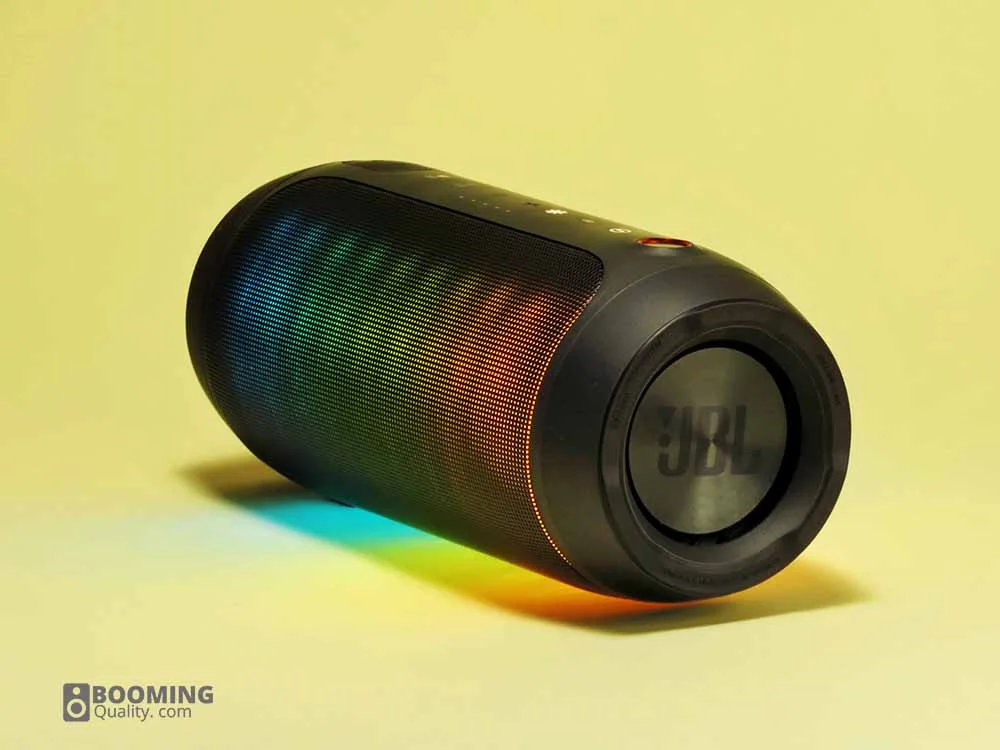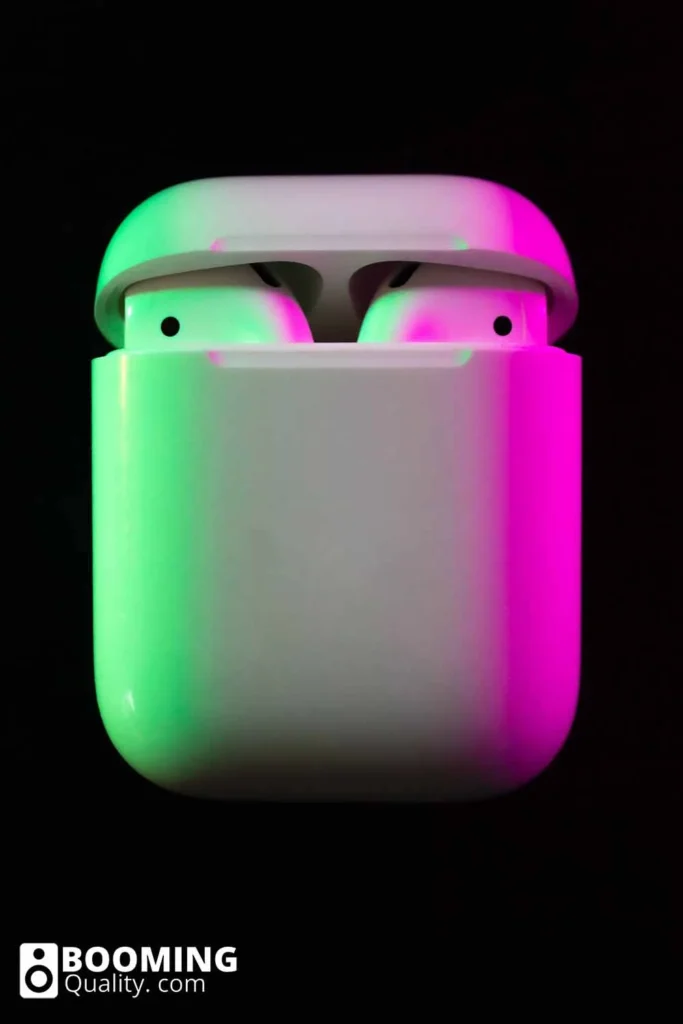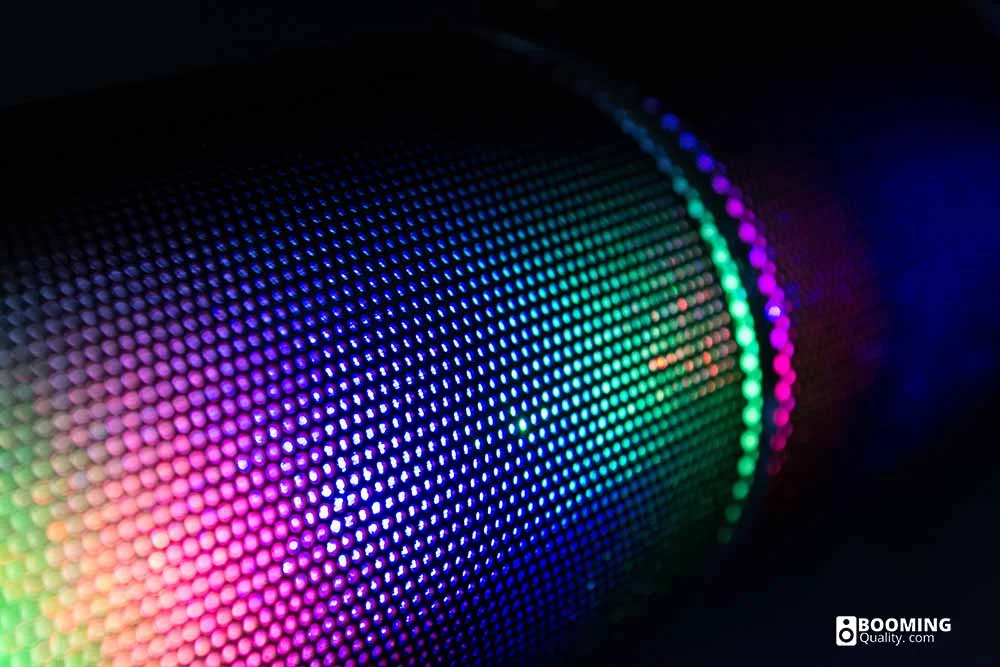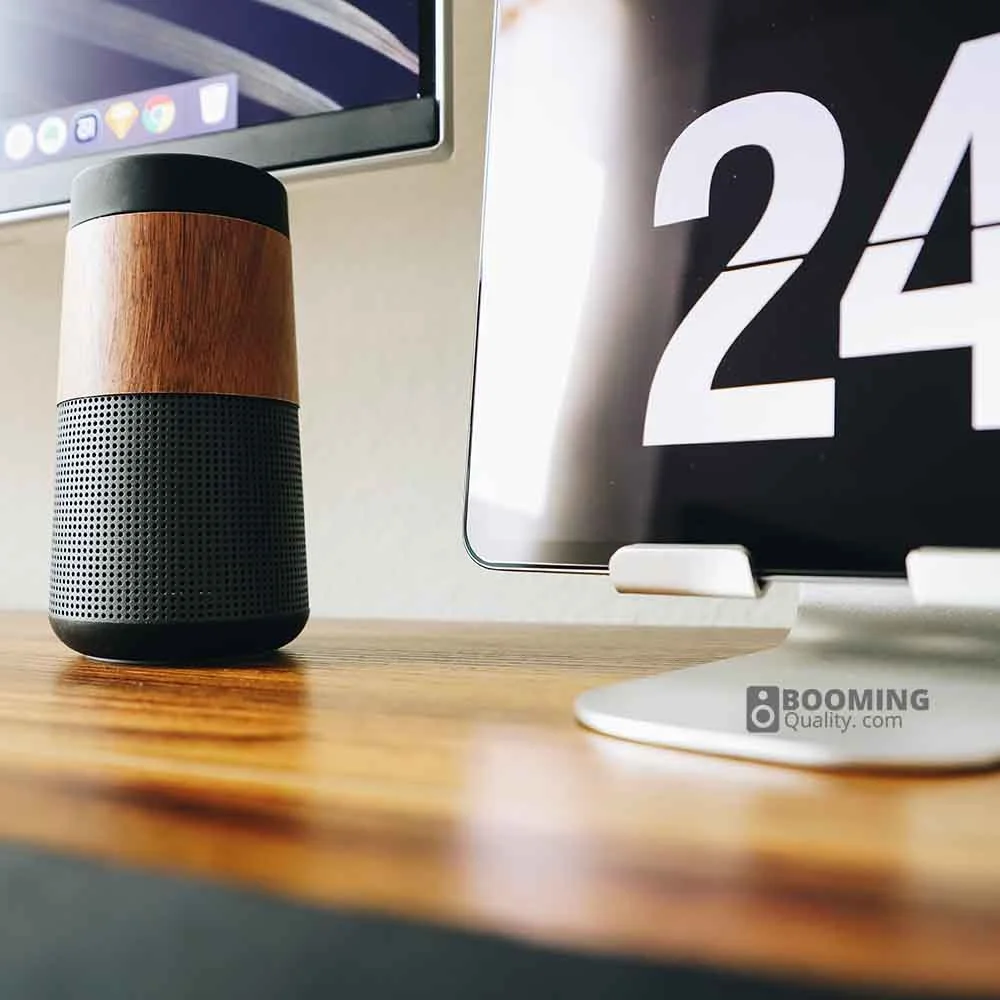
In the fast-paced world of technology, Bluetooth speakers have become an indispensable part of our lives, and we find ourselves asking – how do Bluetooth speakers work?
These portable, wireless sound systems have revolutionized the way we listen to music, stream podcasts, and enjoy audio content on the go.
As we step into 2024, it’s a perfect time to dive into the inner workings of Bluetooth speakers, understand the technology behind them, and explore the incredible convenience they offer in the ever-evolving landscape of wireless connectivity.
Bluetooth speakers are not just about cutting cords; they represent the seamless integration of audio technology into our daily routines.
From compact speakers that fit in your pocket to rugged ones built for outdoor adventures and sophisticated home audio systems, Bluetooth speakers come in various forms to cater to diverse needs and preferences.
They’ve evolved far beyond being mere accessories; they’re now an essential tool for enhancing our auditory experiences.
In this article, we’ll embark on a journey into the world of Bluetooth speakers, exploring the core principles that make them tick and the innovations that have brought them to the forefront of modern audio technology.
Whether you’re a tech enthusiast looking to understand the intricacies or someone who simply enjoys the convenience of wireless sound, this guide will unravel the magic behind Bluetooth speakers in 2024.
So, let’s unravel the technology, delve into the connectivity, and uncover the secrets of how Bluetooth speakers work in this ever-connected digital age.
How do Bluetooth Speakers Work: Bluetooth Technology Demystified
Bluetooth speakers are modern devices that have transformed how we enjoy audio. They owe their wireless convenience and versatility to Bluetooth technology.
But how does Bluetooth work in these speakers, allowing us to stream music, podcasts, and more with just a few taps on our devices?
Let’s unravel the mysteries of Bluetooth technology and discover how it powers these portable sound systems—except for how they receive audio signals.
At the heart of Bluetooth speakers is, well, Bluetooth—the wireless communication technology that has become important in the world of connectivity.
Bluetooth, named after the 10th-century Danish king Harald “Bluetooth” Gormsson, known for uniting Denmark and parts of Norway, is a fitting name for a technology that unites our devices.
Bluetooth technology uses radio waves to transmit data over short distances. While it’s not unique to speakers, its application in these devices has revolutionized how we listen to audio.
Bluetooth speakers are essentially wireless audio receivers and amplifiers, and they utilize Bluetooth connectivity to receive audio signals and play them back with impressive clarity and power.
The magic of Bluetooth begins with a pairing process, where your smartphone, tablet, or computer establishes a secure connection with the speaker.
This connection, often initiated by a simple pairing code or a one-time setup, ensures that your device and the speaker can communicate seamlessly. Once paired, the Bluetooth speaker becomes an extension of your device’s audio capabilities.
Bluetooth technology operates on the 2.4 GHz ISM (Industrial, Scientific, and Medical) radio band. It uses a technique called frequency hopping spread spectrum to transmit data over multiple channels within this band.
This approach reduces interference from other wireless devices and ensures a stable and interference-free audio connection.
When you play music on your device, it gets divided into small data packets, which are then transmitted via Bluetooth in a specific order and reassembled by the speaker. This process happens rapidly, providing real-time audio playback without noticeable delays.
In essence, Bluetooth speakers are not only wireless amplifiers but also smart devices that can connect with various sources, like your smartphone, laptop, or even voice assistants.
They’ve come a long way since their inception and have evolved into versatile, feature-rich gadgets that cater to our diverse audio needs.
So, while the core Bluetooth technology that powers them remains the same, Bluetooth speakers have become more than just audio receivers—they’re the portable sound companions of the digital age.

Components of a Bluetooth Speaker
To understand how Bluetooth speakers work, it’s essential to delve into their internal components.
These components work in harmony to produce the audio you hear. In this section, we’ll break down the key components that make up a typical Bluetooth speaker:
1. Speaker Drivers
At the heart of every Bluetooth speaker are the speaker drivers. These are responsible for converting electrical audio signals into sound waves. Bluetooth speakers typically include two types of drivers: tweeters and woofers.
Tweeters handle high-frequency sounds like vocals and treble, while woofers tackle low-frequency sounds, such as bass and midrange tones. The quality and size of these drivers significantly impact the speaker’s audio output.
2. Amplifiers
Bluetooth speakers contain built-in amplifiers (or amps) that increase the power of the audio signal before it reaches the speaker drivers.
Amplifiers ensure that the sound produced is robust and audible even at higher volumes. The quality of the amplifiers can greatly affect the overall sound quality of the speaker.
3. Bluetooth Module
The Bluetooth module is the brain of the Bluetooth speaker. It connects to a source device (usually a smartphone, tablet, or computer) via Bluetooth, Connecting it directly to the source of the sound, instead of needing wires.
It’s responsible for wirelessly receiving audio signals from your paired devices like smartphones, tablets, or laptops. This module adheres to the Bluetooth standard, ensuring compatibility and seamless connectivity.
Usually, when your device is paired, it will be remembered too and will be able to reconnect with the wireless speakers at any time.
4. Battery
Most portable Bluetooth speakers feature rechargeable batteries. These batteries provide the speaker with the necessary power to operate wirelessly.
The capacity of the battery determines the speaker’s playback time on a single charge. Some high-end models come with long-lasting batteries for extended use.
5. Control Panel
Bluetooth speakers typically have a control panel that allows users to adjust settings, control playback, adjust volume, and more. These controls may include buttons or touch-sensitive surfaces for ease of use.
6. Microphone
Many Bluetooth speakers come equipped with built-in microphones. These microphones enable hands-free calling and voice assistant support.
You can use your speaker as a speakerphone during calls or interact with voice assistants like Siri or Google Assistant.
7. Connectivity Ports
On some models, you may find various connectivity ports like USB ports, audio input jacks, or memory card slots. These ports allow you to connect devices using wired connections or play music from external sources.
8. Enclosure and Housing
The speaker’s enclosure and housing are responsible for containing and protecting the internal components. The design of the enclosure can affect sound quality, resonance, and durability. Enclosures can be sealed (for accurate bass), ported (for louder bass), or even ruggedized for outdoor use.
9. LED Indicators
Bluetooth speakers often feature LED indicators that provide information about the speaker’s status, including power, pairing, and battery life.
10. Antennas
To ensure a stable Bluetooth connection, Bluetooth speakers have built-in antennas. A Built-in antenna and receiver on the wireless speaker detect the radio signal. These antennas help with signal transmission and reception, allowing for reliable wireless connectivity.
Wireless Audio Transmission
One of the defining features of Bluetooth speakers is their ability to transmit audio wirelessly. This wireless audio transmission is made possible by the Bluetooth technology we discussed earlier.
Let’s take a closer look at how this process works in 6 steps:
| 1. Pairing⬇️ | Pairing is the process of creating a secure link between the two devices. |
| 2. Data Transmission⬇️ | Once paired, your audio source (like your smartphone) sends the audio data to the Bluetooth speaker |
| 3. Data Conversion⬇️ | The received audio data is in digital form, consisting of 1s and 0s. |
| 4. Sound Reproduction⬇️ | With the audio data now in analog form, the speaker drivers come into play. These drivers vibrate in response to the electrical signals they receive, creating sound waves. |
| 5. Playback Control⬇️ | You can use your paired device (e.g., smartphone) to play, pause, skip tracks, adjust volume, and even answer calls. |
| 6. Real-Time Synchronization✅ | Bluetooth technology excels in real-time audio transmission, ensuring that the sound from the speaker is synchronized with your source device. |
Bluetooth Pairing and Connectivity
Bluetooth pairing and connectivity involve the discovery of nearby devices, exchanging pairing keys, authenticating the connection, and establishing a secure and private wireless link between your audio source device and your Bluetooth speaker.
This process allows you to enjoy wirelessly transmitted audio from your device through the speaker with ease and convenience.

Voice Assistants and Smart Features
In recent years, Bluetooth speakers have evolved beyond their primary function of audio playback.
Many modern Bluetooth speakers come equipped with voice assistants and a range of smart features that enhance their versatility and convenience.
These voice assistants and smart features significantly expand the capabilities of Bluetooth speakers, making them versatile tools for various tasks beyond playing music.
Whether you’re looking for hands-free convenience, smart home control, or interactive voice assistance, these features add a layer of intelligence and functionality to your Bluetooth speaker.
Bluetooth Speaker Applications in 2024
In 2024, Bluetooth speakers are not limited to a single application but have become versatile tools that cater to various audio needs and lifestyles.
Their integration with smart technology, rugged designs, and superior sound quality ensures that they remain indispensable accessories for a wide range of activities and settings.
Here are some of the prominent applications of Bluetooth speakers in the current year:
Portable Music Playback
Perhaps the most common use of Bluetooth speakers is for portable music playback. Whether you’re at home, in the park, at the beach, or on a hike, these speakers provide a convenient way to enjoy your favorite tunes. Their compact size and wireless functionality make them ideal companions for music enthusiasts.
Outdoor Adventures
Bluetooth speakers designed for rugged outdoor use have gained popularity among adventurers. These speakers are waterproof, dustproof, and shockproof, making them suitable for camping trips, boating excursions, and other outdoor activities. Their durability ensures that they can withstand the elements and still deliver great sound.
Home Entertainment
Bluetooth speakers have found a place in home entertainment setups. They can be used as versatile soundbars or soundbases to enhance the audio quality of TVs, streaming devices, or gaming consoles. Their wireless connectivity simplifies setup and eliminates the need for complex wiring.
Workshops and Garages
For DIY enthusiasts and craftsmen, Bluetooth speakers are great for workshops and garages. They can be mounted on walls or placed on shelves, offering background music while working on projects.
Thinking – Why should I get a speaker for my garage? we can answer those questions in our benefits of a garage speaker article.
Fitness and Workouts
Bluetooth speakers have become essential workout companions. They’re used in home gyms, fitness classes, and outdoor exercise routines. Many are designed to be portable and sweat-resistant, making them a practical choice for active individuals.
Parties and Gatherings
Bluetooth speakers can be perfect for parties and social gatherings. Their portability, loud volume, and ability to connect to multiple devices make them excellent choices for playing music at events.
Some models even feature party modes with synchronized lighting for added fun.
Travel and Vacations
When traveling, compact Bluetooth speakers can enhance your overall experience. Whether you’re listening to music in your hotel room, watching movies on a tablet, or sharing a podcast with friends, these speakers offer a portable audio solution that fits in your luggage.
Voice Assistant Integration
Bluetooth speakers with built-in voice assistants like Amazon Alexa or Google Assistant have become personal assistants in homes. They can answer questions, provide weather updates, control smart home devices, and more—all through voice commands.
Hands-Free Calling
With integrated microphones, Bluetooth speakers have become hands-free calling devices. They allow you to answer calls, make calls, and engage in conference calls without the need to pick up your smartphone.
Education and Presentations
Bluetooth speakers can be valuable tools in educational settings. Teachers and presenters can use them to amplify their voices or play audiovisual content in classrooms and conference rooms.
Future Trends in Bluetooth Speaker Technology
The world of Bluetooth speakers is in a constant state of evolution, driven by technological advancements and changing consumer preferences.
As we look ahead to the future, several exciting trends are shaping Bluetooth speaker technology in 2024 and beyond. In the future, we expect to see:
- Enhanced Sound Quality
- Voice Recognition and AI Integration
- Eco-Friendly Materials
- Wireless Charging
- Longer Battery Life
- Ultra-Portable Designs
- Multi-Connectivity Options
- Gesture and Motion Controls
- Immersive Audio Technologies
- Personalization and Customization
- Integration with Smart Home Ecosystems
- Biometric and Health Features
If you’re interested you can check out some reports on current trends of Bluetooth Speakers.
Choosing the Right Bluetooth Speaker for Your Needs
Choosing the right Bluetooth speaker involves a thoughtful evaluation of your specific needs and preferences. Begin by identifying the primary purpose of the speaker, whether it’s for outdoor adventures, home use, or as a smart assistant.
Sound quality is a critical factor, so assess your audio preferences and consider models with balanced sound profiles if you’re an audiophile.
Portability is essential for on-the-go use, so opt for a compact design with a long-lasting battery if mobility is a priority.
Durability features like water resistance and shockproofing are crucial for outdoor enthusiasts.
Connectivity options should align with your devices, and if you rely on voice assistants, select a speaker that integrates seamlessly.
Establish a budget range and read reviews to gauge performance and reliability. The speaker’s size, design, and additional features also contribute to your overall satisfaction.
With the right considerations, you can find a Bluetooth speaker that aligns with your lifestyle, whether it’s for immersive sound, outdoor durability, or smart home integration.
Prioritize the aspects that matter most to you, and make an informed choice to enhance your audio experience with the perfect Bluetooth speaker.

How do Bluetooth Speakers Work: FAQS
What is the difference between a Bluetooth speaker and a wireless speaker?
The terms “Bluetooth speaker” and “wireless speaker” are often used interchangeably, but they do have distinct differences:
Bluetooth Speaker:
- Connectivity: A Bluetooth speaker specifically uses Bluetooth technology to connect to audio source devices such as smartphones, tablets, laptops, and other Bluetooth-enabled gadgets. It establishes a direct wireless connection between the speaker and the source device.
- Compatibility: Bluetooth speakers are compatible with a wide range of devices that support Bluetooth connectivity. As long as your source device has Bluetooth capability, you can typically pair it with a Bluetooth speaker.
- Range: Bluetooth speakers have a limited range, typically up to about 30 feet (approximately 10 meters) in optimal conditions. The range may vary depending on the specific Bluetooth version and environmental factors.
- Portability: Bluetooth speakers are often designed with portability in mind. They are compact, lightweight, and suitable for on-the-go use, making them popular choices for outdoor activities and travel.
Wireless Speaker:
- Connectivity: A wireless speaker, in a broader sense, encompasses various wireless technologies, not limited to Bluetooth. Wireless speakers may use Wi-Fi, RF (Radio Frequency), or other wireless protocols to connect to audio source devices.
- Compatibility: The compatibility of wireless speakers depends on the specific wireless technology they employ. Some wireless speakers require dedicated apps or compatibility with specific ecosystems (e.g., Apple AirPlay for some wireless speakers), while others may offer broader compatibility with multiple devices and platforms.
- Range: Wireless speakers, depending on the technology used, can have more extended ranges than Bluetooth speakers. Wi-Fi-based wireless speakers, for example, can have a range that extends across your entire home network.
- Functionality: Wireless speakers often offer more advanced features beyond basic audio playback. They may be part of a multi-room audio system, support high-resolution audio streaming, or integrate with smart home devices.
What is the disadvantage of Bluetooth speakers?
Bluetooth speakers come with several disadvantages, including a limited wireless range of around 30 feet, audio compression that can slightly degrade sound quality, and potential latency issues that may affect video and gaming experiences.
Their battery life can vary, and some models may require frequent recharging.
Compatibility can also be a concern, as not all devices support Bluetooth technology, necessitating additional accessories for connectivity.
Bluetooth speakers may experience interference from other wireless devices, and their security features, while improved, may still pose a small risk of unauthorized access.
Additionally, they may not match the audio power or quality of larger wired speakers or home theater systems, making them more suitable for personal or small-group use.
Do Bluetooth speakers need to be plugged in?
Bluetooth speakers can operate wirelessly and do not need to be plugged in for audio playback as long as they have a built-in battery.
If they do not have a built-in battery then they will need to be plugged into a power source.
What are the risks of Bluetooth?
Bluetooth technology, like many wireless technologies, comes with certain risks and potential security concerns. Some of the primary risks associated with Bluetooth include:
- Unauthorized Access: Bluetooth devices can be vulnerable to unauthorized access if proper security measures are not in place. This can lead to unauthorized data access or control of connected devices.
- Bluejacking: Bluejacking is a relatively harmless but intrusive practice where an attacker sends unsolicited messages or files to nearby Bluetooth devices without the owner’s consent.
- Bluesnarfing: Bluesnarfing is a more serious security threat where an attacker gains unauthorized access to a Bluetooth device to steal personal information, contacts, or sensitive data.
- Denial of Service (DoS) Attacks: Attackers can launch DoS attacks on Bluetooth devices to disrupt their functionality, rendering them temporarily unusable.
- Eavesdropping: In some cases, it may be possible for eavesdroppers to intercept Bluetooth communications, potentially compromising the privacy and confidentiality of the data being transmitted.
- Pairing Vulnerabilities: The process of pairing Bluetooth devices can have vulnerabilities if not properly secured. Weak PINs or passcodes can be exploited by attackers.
- Outdated Security Protocols: Older versions of Bluetooth, such as Bluetooth Classic, may have security vulnerabilities that have been addressed in more recent versions like Bluetooth 4.0 and later.
- Device Vulnerabilities: The security of Bluetooth devices themselves can be a concern if manufacturers do not regularly release firmware updates to address vulnerabilities.
Is it better to connect by Wi-Fi or Bluetooth?
- If you need fast data transfer, extended range, and multi-device connectivity, Wi-Fi is often the better choice. It’s suitable for scenarios like home audio systems, streaming high-definition video, and smart home setups.
- If you prioritize ease of use, energy efficiency, and direct device-to-device connections, Bluetooth may be more suitable. It’s commonly used for personal audio devices, wireless peripherals, and quick file sharing between devices.
Ultimately, the decision depends on your specific use case and the devices you want to connect. Many modern devices support both Wi-Fi and Bluetooth, allowing you to choose the most appropriate connection method for a given task

Written By Emily
If you found our article helpful on learning how Bluetooth speakers work, then you can enjoy our other content about Bluetooth speakers for a garage.
